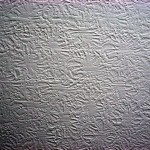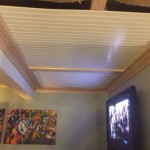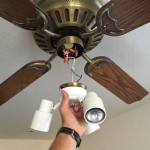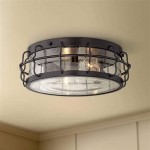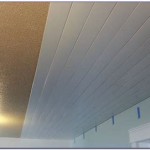```html
How to Hang Sheetrock on a Ceiling: A Comprehensive Guide
Hanging sheetrock, also known as drywall, on a ceiling is a common home improvement project that can significantly enhance the appearance of a room. While it can be a physically demanding task, proper planning and technique will ensure a professional-looking finish. This article provides a detailed guide on how to successfully hang sheetrock on a ceiling.
Planning and Preparation: The Foundation for Success
Before commencing the installation process, thorough planning and preparation are crucial. This stage ensures that the correct materials are available and that the workspace is conducive to efficient and safe working practices. This involves assessing the ceiling structure, selecting the appropriate materials, and ensuring personal safety.
Assessing the Ceiling Structure: The initial step involves inspecting the existing ceiling framing. Identify the joist spacing, which typically ranges from 16 to 24 inches on center. Determine the direction of the joists as this will influence the sheetrock installation direction. If the ceiling is damaged or sagging, address these issues before proceeding with the new sheetrock. Reinforce weak joists or repair any existing water damage. Irregularities in the framing can lead to uneven surfaces and potential structural problems later.
Selecting the Appropriate Materials: Choose the correct type and thickness of sheetrock. For ceilings, ½-inch thick sheetrock is generally recommended due to its rigidity and ability to resist sagging. However, in some cases, 5/8-inch thick sheetrock may be required for fire-rated assemblies or installations where greater soundproofing is desired. Consider using lightweight sheetrock, which is easier to handle and reduces the strain on the ceiling joists. In damp environments, moisture-resistant sheetrock (often referred to as "green board" or "blue board") should be used. Also, acquire the necessary fasteners, such as drywall screws designed for ceiling applications. These screws should be long enough to penetrate the sheetrock and embed securely into the joists. A minimum screw length of 1 ¼-inches is generally recommended for ½-inch sheetrock.
Ensuring Personal Safety: Safety is paramount when working overhead. Wear safety glasses to protect the eyes from falling debris. Use a hard hat to prevent head injuries. Employ a sturdy scaffolding or drywall lift for safe access to the ceiling. Avoid overreaching or working from unstable platforms. When lifting sheetrock, ask for assistance from another person to prevent strains and injuries. Ensure adequate ventilation in the work area and consider wearing a dust mask to minimize the inhalation of drywall dust. Disconnect the electricity to the work area to prevent electrical shocks.
Installation Techniques: Securing the Sheetrock to the Ceiling
The core of the project lies in the precise installation of the sheetrock panels. Proper alignment, secure fastening, and attention to joint placement are all essential for a professional outcome. This segment focuses on lifting the sheetrock into place, fastening it securely, and addressing seams and edges.
Lifting the Sheetrock into Place: Due to the weight and size of sheetrock panels, a drywall lift is highly recommended for ceiling installations. This device allows for controlled lifting and positioning of the sheetrock, significantly reducing the risk of injury and ensuring accurate placement. If a drywall lift is unavailable, enlist the help of at least two people. Carefully lift the sheetrock panel and position it against the ceiling joists. Ensure the panel is flush with the adjacent walls, if any. Align the edges of the sheetrock with the center of the joists to allow for secure fastening. If using multiple panels, stagger the joints to prevent cracking and create a stronger ceiling assembly.
Fastening the Sheetrock Securely: Once the sheetrock is in place, begin fastening it to the ceiling joists using drywall screws. Use a screw gun with a depth setting to avoid overdriving the screws, which can damage the sheetrock paper and reduce the holding power. Space the screws approximately 12 inches apart along the length of each joist. Place screws at least 3/8 inch away from the edge of the sheetrock to prevent crumbling. Ensure that the screw heads are slightly recessed into the sheetrock without tearing the paper. If a screw is overdriven, remove it and place a new screw a few inches away. Check for any gaps between the sheetrock and the joists, and add additional screws as needed to ensure a tight and secure connection. When fastening near electrical boxes or other obstructions, take extra care to avoid damaging wires or pipes.
Addressing Seams and Edges: Proper treatment of seams and edges is crucial for a smooth, professional-looking finish. At the edges of the ceiling, ensure that the sheetrock panels are cut accurately to fit against the walls. If there are any gaps, fill them with joint compound before applying drywall tape. For inside corners, apply paper or fiberglass tape using joint compound. For outside corners, install metal corner bead, which provides added protection and a clean, sharp edge. Use a taping knife to smooth the joint compound and feather it out onto the surrounding sheetrock surface. Allow the joint compound to dry completely before applying additional coats. Sand the dried joint compound lightly to create a smooth and even surface. Be careful not to sand through the paper facing of the sheetrock. Vacuum or wipe down the ceiling to remove any dust before priming and painting.
Finishing and Detailing: Achieving a Professional Look
The final stages involve concealing the seams, smoothing the surfaces, and preparing the ceiling for painting. This meticulous process ensures a seamless and aesthetically pleasing result. This includes application of joint compound, sanding and priming the surface.
Application of Joint Compound: Apply several coats of joint compound over the seams and screw holes to create a smooth, seamless surface. Use a wide taping knife (at least 6 inches) to apply the first coat of joint compound. Embed paper or fiberglass tape into the wet compound, ensuring that it is centered over the seam. Press firmly to remove any air bubbles and smooth the tape with the taping knife. Allow the first coat to dry completely before applying the second coat. With each subsequent coat, use a wider taping knife (up to 12 inches) to feather the edges of the joint compound and blend it into the surrounding sheetrock surface. Allow each coat to dry completely before sanding.
Sanding and Priming the Surface: Once the joint compound is thoroughly dry, sand the surface to create a smooth and even finish. Use a sanding pole with a fine-grit sandpaper (120-150 grit) for large areas and a sanding block for smaller areas and corners. Sand lightly and evenly, being careful not to sand through the paper facing of the sheetrock. Vacuum or wipe down the ceiling to remove all dust and debris. Apply a coat of drywall primer to seal the surface and improve paint adhesion. Primer also helps to hide any imperfections in the joint compound and create a uniform surface for painting. Allow the primer to dry completely before applying the paint.
By following these steps carefully, even those with limited experience can successfully hang sheetrock on a ceiling. Remember to prioritize safety, plan thoroughly, and pay attention to detail throughout the process for the best possible results.
```
How To Install Ceiling Drywall 12 Steps With Pictures Wikihow

How To Hang Drywall By Yourself

How To Install Ceiling Drywall 12 Steps With Pictures Wikihow

How To Hang Drywall Like A Pro Diy Family Handyman

3 Ways To Hang Drywall By Yourself Wikihow

How To Hang Drywall On Ceilings 2024 Guideline Tools First

Tips For Hanging Drywall On Ceilings Great Diy

Diy How To Drywall A Ceiling By Yourself No Jack Required

How To Install Ceiling Drywall 12 Steps With Pictures Wikihow

How To Hang Drywall By Yourself Young House Love
Related Posts

